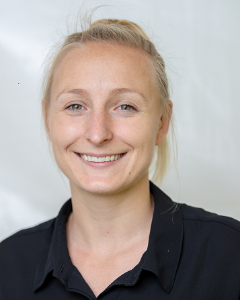From the Editor
On 1 December 1955, a Black American seamstress called Rosa Parks refused to give up her seat on a public bus for a White American. Miss Parks had no idea what this one act of defiance would come to symbolise. It would not only strengthen the resolve of other Black Americans to be treated with respect and dignity and as fully-fledged citizens of the United States. The civil rights movement that resulted from this one memorable act would later have several spin-offs, including the women’s rights movement.
So what is the state of the women’s rights movement like today? Though it didn’t get off to a flying start at the time when women were starting to come into their own as professionals, entrepreneurs and breadwinners, among others, it did gain a great deal of momentum in the 1980s and 1990s. It is no wonder that it was during this period that the flagship women’s organisation in Uganda, Action for Development (ACFODE), was established. Its seminal nature served as an inspiration for the formation of the many organisations that would be set up after it. Of course, the women’s movement and the organisations that epitomised it have encountered a number of challenges. Some of these have to do with the socially constructed roles of women, patriarchy, and yet others relate to the ways in which the movement came to be viewed – by commission or omission – by the general public.
Some men, based on the aspirations and demands of the movement, started to look askance at it. They felt that it was something radical that was meant to take away their privileges, to crowd them out of the spaces they had hitherto comfortably occupied, to push them against the wall. In addition, some women – especially rural ones – felt that it was a ploy by some elite women to stack the odds in their favour, with many failing to see its relevance to their day-to-day lives.
However, the activities of the women’s movement spoke otherwise and because of this, together with the activities of individual women’s rights activists, many of the men and women who were at fist skeptical came around. They realised that the movement meant well.
Unfortunately of late the movement seems to have lost momentum much as many young women and men have come on board either to work with it or to give it support. What could have happened?
These are the issues that, besides mulling over the history and contours of the women’s movement, Arise 63 delves into. It also comes up with suggestions regarding how to imbue the movement with fresh impetus.
As in earlier issues, Arise 63 also carries reviews of two very engaging works of fiction. The first, entitled Dance of the Jakaranda, was written by a Kenyan author, Peter Kimani. It is a historical novel with a multi-layered plot where human foibles and vulnerabilities are explored. It is animated by a huge cast of characters, among whom the most prominent are a White colonial administrator, an Indian technician and a White preacher. The racial, social and geographical spaces of the characters intersect, leading to a number of outcomes. The second, written by a Nigerian writer named Ayobami Adebayo, was nominated for a prestigious literary prize award. Entitled ‘Stay with Me’, it explores the conundrum of male infertility and some of the responses to it, including guilt-tripping and blame-gaming, and how some women are complicit in the troubles of their female kin.
Arise 63 is not only enlightening; it is also thought-provoking.
You can download the whole issue as pdf.
Topics
About this series
ARISE magazine features varying issues around women and development in Uganda. Whether women wearing uniform, working as farmers, or holding political offices: We review the trends and challenges women face in Uganda. The magazine has been published in cooperation with Action for Development since 1990.
Order details
Editor
Action for Development & Konrad-Adenauer-Stiftung e. V.



